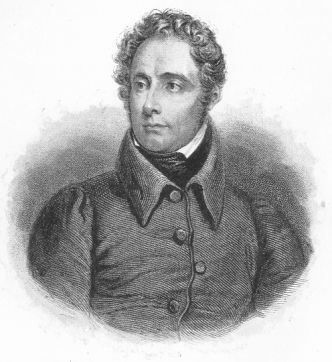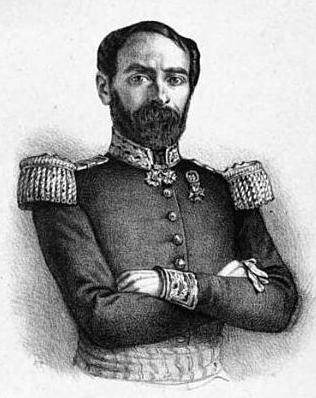French Executive Commission (1848) on:
[Wikipedia]
[Google]
[Amazon]
The Executive Commission of 1848 was a short-lived government during the
 In May 1848 the National Assembly decided to establish the Executive Commission as a form of collective presidency, similar to that of Year III in the first
In May 1848 the National Assembly decided to establish the Executive Commission as a form of collective presidency, similar to that of Year III in the first
 At this time the bourgeoisie were becoming increasingly uneasy about the possibility of mob rule leading to a repeat of the
At this time the bourgeoisie were becoming increasingly uneasy about the possibility of mob rule leading to a repeat of the

French Second Republic
The French Second Republic (french: Deuxième République Française or ), officially the French Republic (), was the republican government of France that existed between 1848 and 1852. It was established in February 1848, with the February Re ...
, chaired by François Arago
Dominique François Jean Arago ( ca, Domènec Francesc Joan Aragó), known simply as François Arago (; Catalan: ''Francesc Aragó'', ; 26 February 17862 October 1853), was a French mathematician, physicist, astronomer, freemason, supporter of t ...
, that exercised executive power from 9 May 1848 to 24 June 1848. It succeeded the Provisional Government of 1848 and was in turn replaced by the Cabinet of General Cavaignac
The cabinet of General Cavaignac was the government of France from 28 June 1848 to 20 December 1848. It replaced the Executive Commission of 1848 after the June Days Uprising of 23 June to 26 June 1848. General Louis-Eugène Cavaignac (1802-18 ...
.
The members of the Commission acted as joint head of state.
The Commission lacked support in the National Assembly. It soon found itself at odds with the conservative majority and effectively unable to properly govern. The closure of the National Workshops
National Workshops (french: Ateliers Nationaux) refer to areas of work provided for the unemployed by the French Second Republic after the Revolution of 1848. The political crisis which resulted in the abdication of Louis Philippe caused an indust ...
, by leading to the June Days Uprising
The June Days uprising (french: les journées de Juin) was an uprising staged by French civilians from 22 to 26 June 1848. It was in response to plans to close the National Workshops, created by the Second Republic in order to provide work an ...
, sealed the doom of the Executive Commission. Judging the Commission unable to quell the uprising, the Assembly effectively dissolved it on June 24 by a vote of no confidence
A motion of no confidence, also variously called a vote of no confidence, no-confidence motion, motion of confidence, or vote of confidence, is a statement or vote about whether a person in a position of responsibility like in government or mana ...
and gave full powers to General Louis Eugène Cavaignac Louis may refer to:
* Louis (coin)
* Louis (given name), origin and several individuals with this name
* Louis (surname)
* Louis (singer), Serbian singer
* HMS ''Louis'', two ships of the Royal Navy
See also
Derived or associated terms
* Lewis ...
.
Formation
French Revolution
The French Revolution ( ) was a period of radical political and societal change in France that began with the Estates General of 1789 and ended with the formation of the French Consulate in November 1799. Many of its ideas are conside ...
. The members were chosen from prominent members of the former Provisional Government.
The members named to the commission by the Assembly on 9 May 1848 were François Arago
Dominique François Jean Arago ( ca, Domènec Francesc Joan Aragó), known simply as François Arago (; Catalan: ''Francesc Aragó'', ; 26 February 17862 October 1853), was a French mathematician, physicist, astronomer, freemason, supporter of t ...
(President of the Commission), Alphonse de Lamartine
Alphonse Marie Louis de Prat de Lamartine (; 21 October 179028 February 1869), was a French author, poet, and statesman who was instrumental in the foundation of the Second Republic and the continuation of the Tricolore as the flag of France. ...
, Louis-Antoine Garnier-Pagès, Alexandre Auguste Ledru-Rollin and Pierre Marie de Saint-Georges
Alexandre-Pierre-Thomas-Amable Marie de Saint Georges (15 February 1795 – 28 April 1870), better known as Pierre Marie de Saint-Georges, was a French politician who served as French Head of State from 6 May until 28 June 1848.
Marie was born i ...
.
These members acted jointly as head of state.
Lamartine was seen by many as representing order and respect for property, while Ledru-Rollin stood for violence and communism.
However, Lamartine used his strong popular mandate to force the National Assembly to make Ledru-Rollin one of the members of the Executive Commission.
This greatly undermined his credibility.
Lamartine's motives are unclear, but perhaps he was concerned that the power was swinging too far towards the Conservatives.
The members of the Executive Commission were not assigned ministries.
Instead, at the first meeting on 11 May 1848 the commission appointed ministers.
They were all moderate republicans apart from Ferdinand Flocon
Ferdinand Flocon (1 November 1800 – 15 March 1866) was a French journalist and politician who was one of the founding members of the Provisional Government at the start of the French Second Republic in 1848. He was Minister of Agriculture and Co ...
.
The composition of the government was thus unsatisfactory to both the conservative majority of the National Assembly and the radical left.
Events
Demonstration of 15 May
 At this time the bourgeoisie were becoming increasingly uneasy about the possibility of mob rule leading to a repeat of the
At this time the bourgeoisie were becoming increasingly uneasy about the possibility of mob rule leading to a repeat of the Reign of Terror
The Reign of Terror (french: link=no, la Terreur) was a period of the French Revolution when, following the creation of the First French Republic, First Republic, a series of massacres and numerous public Capital punishment, executions took pl ...
of the first French Revolution
The French Revolution ( ) was a period of radical political and societal change in France that began with the Estates General of 1789 and ended with the formation of the French Consulate in November 1799. Many of its ideas are conside ...
.
Ledru-Rollin planned a ''fête de la Concorde'' on 15 May celebrating peace and labor that included decorations that recalled the earlier revolution.
On 13 May the Executive Commission, nervous about rumors of planned demonstrations, announced that the festival was postponed.
The move backfired. A crowd led by Louis Auguste Blanqui launched an attack on 15 May on the Palais Bourbon
The Palais Bourbon () is the meeting place of the National Assembly, the lower legislative chamber of the French Parliament. It is located in the 7th arrondissement of Paris, on the '' Rive Gauche'' of the Seine, across from the Place de la Con ...
, where the Assembly was meeting.
The head of the National Guard
National Guard is the name used by a wide variety of current and historical uniformed organizations in different countries. The original National Guard was formed during the French Revolution around a cadre of defectors from the French Guards.
Nat ...
of Paris, General Amable de Courtais, would not order his men to use violence.
For three hours the Assembly was paralyzed by the demonstrators.
Order was restored, but the authority of the Commission was damaged.
The conservative majority in the Assembly blamed the Executive Committee for allowing the incident to occur, saying it was not competent.
The arrest of the leaders of the workers, Armand Barbès
Armand Barbès (18 September 1809 – 26 June 1870) was a French Republican revolutionary and an opponent of the July monarchy (1830–1848). He is remembered as a man whose life centers on two days:
* ''12 May 1839'', the day of the uprisin ...
and Blanqui, left the working people without leaders.
General Coutais was also arrested, accused of treason.
The government reorganized the National Guard and moved a large garrison of regular army troops into the center of Paris.
On 22 May 1848 the Executive Commission dissolved the Club Raspail and the Club Blanqui, left-wing bases.
Issue of Louis Napoleon
Louis Napoleon, who was in exile in London, was elected to the National Assembly on 4 June 1848. He was known to be ambitious to take supreme power, and had already made two failed attempts, in 1836 and 1840. A circular appeared in the departments on 16 June 1848 in which the Executive Government ordered the arrest of Louis Napoleon. It appears to have been issued just before the question was raised in the National Assembly, and indicates that the government was confident that the motion would pass. On 13 June Lamartine and Ledru-Rollin argued in the Assembly that Louis-Napoleon be disqualified, but the majority voted to admit him. In the event, Louis-Napoleon sent a letter of resignation, but his plans remained unclear. This was another of the steps that weakened the government and led to its fall.June Days
National Workshops
National Workshops (french: Ateliers Nationaux) refer to areas of work provided for the unemployed by the French Second Republic after the Revolution of 1848. The political crisis which resulted in the abdication of Louis Philippe caused an indust ...
had been established by decree of the Provisional Government in February 1848 with the objective of providing employment through undertaking public works. They employed thousands of men during the spring of 1848, doing jobs like leveling and ditching.
The National Assembly placed increasing pressure on the Commission to close down the workshops.
When the Executive Commission announced their effective closure on 21 June 1848 this pushed an already discontented proletariat into open rebellion.
According to the ''Bien Public'', the committee anticipated the June Days Uprising
The June Days uprising (french: les journées de Juin) was an uprising staged by French civilians from 22 to 26 June 1848. It was in response to plans to close the National Workshops, created by the Second Republic in order to provide work an ...
(23–26 June 1848) and ordered General Louis-Eugène Cavaignac to concentrate forty or fifty thousand men in Paris so he could suppress the riots without bloodshed. However, when the riots began on the morning of Friday 23 June there were only ten to twelve thousand troops in the city.
Cavaignac insisted on letting the workers build their barricades without opposition, so they could be more effectively destroyed, where Lamartine and others argued for taking immediate action to avoid bloodshed. Cavaignac's views prevailed.
On Saturday 24 June 1848 the Assembly decided to remove the Executive Commission from power and install Cavaignac as dictator.
At the insistence of the Assembly the five members of the Executive Commission resigned on that day.
This ended the political careers of Lamartine and Ledru-Rollin.
Once Cavaignac had been granted full power, more troops appeared and the uprising was quickly suppressed.
Ministers
The ministerial appointments were: ;Changes: * On 17 May 1848, General Eugène Cavaignac substituted Jean-Baptiste Charras as War Minister. * On 7 June 1848,Eugène Bethmont
Eugène Bethmont (12 March 1804 – 1 April 1860) was a French politician. He was a deputy from 1842 to 1848, a representative in the Constituent Assembly of 1848, and Minister of Justice in the Cabinet of General Cavaignac (28 June 1848 to 20 D ...
substituted Adolphe Crémieux
Isaac-Jacob Adolphe Crémieux (; 30 April 1796 – 10 February 1880) was a French lawyer and politician who served as Minister of Justice under the Second Republic (1848) and Government of National Defense (1870–1871). He served as presiden ...
as Justice Minister.
References
Sources
* * * * * * * {{DEFAULTSORT:Executive Commission of 1848, French French governments Heads of state of France 1848 in France French Second Republic 1848 establishments in France 1848 disestablishments in France Cabinets established in 1848 Cabinets disestablished in 1848